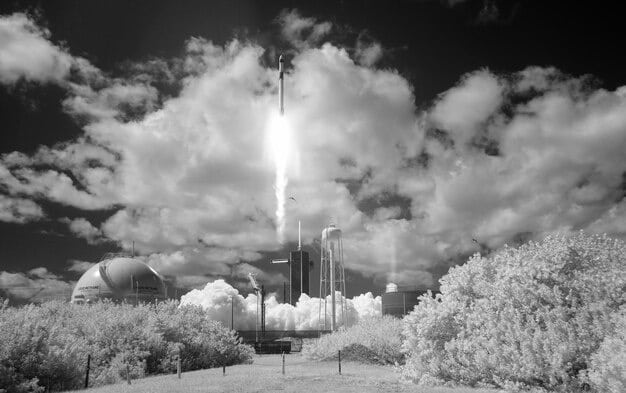Carbon Capture: Latest Scientific Findings on Effectiveness

The latest scientific findings indicate that carbon capture technologies hold promise for mitigating climate change, albeit with varying degrees of effectiveness, cost implications, and scalability challenges across different methodologies, from direct air capture to industrial point source capture.
The global challenge of climate change necessitates urgent and innovative solutions. Among the most discussed and debated approaches are What are the Latest Scientific Findings on the Effectiveness of Carbon Capture Technologies in Mitigating Climate Change? Once relegated to niche discussions, these technologies are now central to many climate mitigation strategies, aiming to directly remove carbon dioxide from the atmosphere or prevent its release from industrial sources. But how effective are they truly, according to the latest research? This article delves into the cutting-edge scientific findings that illuminate the current state, potential, and limitations of carbon capture technologies.
The Urgency of Carbon Capture in Climate Mitigation
The scientific consensus on anthropogenic climate change is clear and compelling: global temperatures are rising at an unprecedented rate due to the accumulation of greenhouse gases, primarily carbon dioxide. Achieving the ambitious targets set by international agreements, such as limiting global warming to 1.5°C above pre-industrial levels, requires not only drastic reductions in emissions but also, increasingly, the active removal of CO2 from the atmosphere. This is where carbon capture, utilization, and storage (CCUS) technologies enter the critical conversation.
The role of CCUS has evolved from a supplementary measure to an indispensable component in many climate models. Reports from the Intergovernmental Panel on Climate Change (IPCC) consistently highlight that reaching net-zero emissions, and potentially net-negative emissions, by mid-century will likely be impossible without deploying these technologies at scale. While emission reductions remain the paramount objective, the sheer volume of historical and ongoing CO2 releases necessitates a multi-faceted approach. Carbon capture offers a pathway to address hard-to-abate sectors, such as heavy industry and power generation, which cannot easily transition to renewable energy sources, as well as providing solutions for legacy emissions.
Addressing Legacy Emissions and Industrial Challenges
One of the primary advantages of carbon capture is its potential to address emissions from existing infrastructure. Many industrial facilities, like cement plants, steel mills, and chemical factories, are designed for long operational lifespans and are significant CO2 emitters. Retrofitting these facilities with capture technologies can achieve substantial emission reductions without requiring immediate, wholesale replacement. This offers a pragmatic bridging solution as the world transitions to a fully decarbonized economy.
- Cement Production: A major emitter, accounting for about 8% of global CO2. Capture can decarbonize its processes.
- Steel Manufacturing: Another intensive CO2 sector where CCUS can reduce emissions from blast furnaces.
- Power Generation: Especially from natural gas and coal plants, where capture can significantly lower their carbon footprint.
- Chemical Production: Various chemical processes release CO2 as a byproduct, making them prime candidates for capture.
The urgency stems from the recognition that a delay in deployment translates to a larger accumulation of CO2 in the atmosphere, requiring even more aggressive and expensive mitigation efforts in the future. Investing in carbon capture now is seen by many as a necessary hedge against insufficient emission cuts and a pathway to rapidly decarbonize sectors that are difficult to abate. The scientific community emphasizes that while carbon capture is not a silver bullet, it is a crucial arrow in the quiver for achieving climate stability.
In summary, the scientific rationale for integrating carbon capture into climate strategies is underpinned by the immense scale of the climate crisis, the need to address hard-to-abate industrial emissions, and the reality that significant CO2 removals will be necessary to meet global temperature targets. It represents a vital tool for enabling a transition to a low-carbon future, complementing, but not replacing, aggressive emission reduction policies.
Advances in Carbon Capture Technologies: A Deeper Dive
Carbon capture technologies are broadly categorized into three main types: pre-combustion, post-combustion, and oxy-fuel combustion, along with the nascent but rapidly developing direct air capture (DAC). Each method employs different scientific principles to isolate CO2, and recent research has focused on improving their efficiency, scalability, and economic viability. Understanding these advancements is key to assessing their overall effectiveness.
Post-combustion capture is perhaps the most mature and widely studied method due to its applicability to existing power plants and industrial facilities. This involves removing CO2 from the flue gas after fossil fuels have been burned. Amine-based solvents have traditionally been the workhorse here, but their energy-intensive regeneration process has been a major barrier. Recent scientific breakthroughs include the development of novel solvents with lower energy requirements, such as phase-change solvents or solid sorbents, which promise to significantly reduce the energy penalty associated with capture.
Emerging Technologies and Efficiency Gains
Research is also exploring membrane separation technologies, which offer a potentially more compact and energy-efficient alternative. Polymer, ceramic, and mixed-matrix membranes are being developed that selectively permute CO2, separating it from other gases in the flue stream. These advancements are critical for reducing both the capital and operational costs of capture plants, making them more attractive for broad deployment across various industrial sectors.
- Advanced Solvents: Lower regeneration energy, higher CO2 absorption capacity.
- Membrane Separations: Compact, modular designs, potentially lower energy consumption.
- Solid Sorbents: Materials like metal-organic frameworks (MOFs) and zeolites offer high surface area for CO2 adsorption.
- Enzyme-based Capture: Utilizes biological processes for highly specific and efficient CO2 absorption.
Direct Air Capture (DAC), while technically challenging, represents a powerful long-term solution. Unlike point-source capture, DAC systems remove CO2 directly from the ambient air, regardless of its origin. Recent scientific milestones in DAC include the development of new sorbent materials that can capture CO2 at much lower concentrations (around 400 ppm in the atmosphere compared to 10-15% in flue gas). Companies like Climeworks and Carbon Engineering are demonstrating various approaches, from liquid solvent systems to solid sorbent-based technologies, showing promising, albeit still expensive, capture rates. The focus of research is now on improving energy efficiency and durability of sorbent materials to bring down the cost per ton of CO2 captured.
Furthermore, integration of carbon capture with renewable energy sources is gaining traction. Powering capture processes with wind or solar energy can significantly reduce their carbon footprint, addressing concerns about the energy needed for capture. This holistic approach ensures that the decarbonization effort is truly net-negative, rather than merely shifting emissions. These scientific and engineering advances are steadily improving the technical viability and economic attractiveness of carbon capture, positioning it as a more effective tool in the climate mitigation arsenal.
Scientific Assessment of Capture Efficiency and Cost Implications
The effectiveness of carbon capture technologies is not just about the percentage of CO2 removed, but also about the energy required for the process, the overall cost, and the environmental impact of the entire capture, transport, and storage chain. Recent scientific assessments indicate varying levels of efficiency across different capture methods, with a direct correlation between capture rate and energy penalty.
For most commercial-scale post-combustion capture plants utilizing amine solvents, capture efficiencies typically range between 85% and 95%. While seemingly high, achieving these rates often comes with a significant energy penalty, reducing the net power output of electricity generation plants by 10-30%. This ‘parasitic load’ translates directly into higher operational costs and, unless compensated by very low-carbon energy inputs, can reduce the overall carbon abatement effectiveness. Scientific efforts are heavily focused on reducing this energy demand through improved solvent chemistry, process optimization, and alternative capture mechanisms.
Economic Challenges and Scalability
The cost of carbon capture remains a substantial hurdle for widespread deployment. The levelized cost of capturing CO2 per ton varies significantly depending on the source and technology. For industrial point sources with high CO2 concentrations, costs can range from $20-100 per ton. However, for direct air capture (DAC), which extracts CO2 from the much more dilute ambient air, costs are currently much higher, ranging from $250-600 per ton, although projections suggest these could drop to below $100 per ton with technological maturity and economies of scale.
- Capital Costs: High initial investment for capture equipment, pipelines, and storage sites.
- Operational Costs: Energy consumption for capture, compression, and transportation.
- Carbon Price: The economic viability often depends on a sufficiently high carbon price or robust government incentives.
- Infrastructure Needs: Development of extensive CO2 transportation and storage networks.
A comprehensive scientific assessment must also consider the costs associated with CO2 transport and permanent geological storage. While transport through pipelines is a proven technology for natural gas, building an extensive CO2 pipeline network is a significant undertaking. Geological storage, primarily in deep saline aquifers or depleted oil and gas reservoirs, requires rigorous site characterization and monitoring to ensure long-term containment and prevent leakage. Research into monitoring technologies, such as seismic imaging and geochemical sensors, is crucial for ensuring the integrity of these storage sites, ensuring the captured carbon remains sequestered for millennia.
Furthermore, the “social cost of carbon” estimation plays a role in the economic assessment. If the cost of emitting carbon is high enough, then carbon capture becomes more economically competitive. Policies like carbon taxes or cap-and-trade systems are designed to create this economic incentive. Overall, while scientific advancements are steadily improving capture efficiency and reducing costs, significant policy and financial frameworks are still needed to accelerate the large-scale deployment required for climate mitigation objectives. The scientific community stresses that robust financial incentives and regulatory certainty are as critical as technological breakthroughs for making carbon capture a viable climate solution.

Storage and Utilization: The Crucial Next Steps
Capturing CO2 is only half the equation; what happens to it afterward is equally, if not more, critical for climate change mitigation. The two primary paths for captured carbon are sequestration (storage) and utilization. Scientific findings continue to refine our understanding of both the long-term safety and capacity of CO2 storage, as well as innovative ways to convert CO2 into valuable products, thereby creating a circular carbon economy.
Carbon Capture and Storage (CCS) primarily involves injecting captured CO2 into deep geological formations. The most promising natural reservoirs include deep saline aquifers, depleted oil and gas fields, and unmineable coal seams. Scientific research focuses heavily on ensuring the permanence and safety of these storage sites. Studies confirm that properly selected and managed geological sites can securely store CO2 for thousands, if not millions, of years. Permeability, porosity, and the presence of caprock integrity are key geological factors carefully assessed during site selection. Advanced seismic monitoring, pressure gauges, and geochemical measurements are employed to track the CO2 plume and detect any potential leakage, though the risk of significant leakage from well-managed sites is considered very low by geological experts.
Innovative Carbon Utilization Pathways
Carbon Capture and Utilization (CCU) aims to transform CO2 into useful products, potentially offsetting capture costs and reducing reliance on fossil-derived feedstocks. This pathway is gaining significant scientific interest, moving beyond enhanced oil recovery (EOR) where CO2 is injected into oil fields to boost production, to more novel and transformative uses. While EOR technically stores CO2, its primary driver is fossil fuel extraction, making it controversial in some environmental circles. The focus is shifting to utilization that truly reduces net emissions.
- Chemical Feedstocks: Converting CO2 into methanol, urea, polymers, or carbonates.
- Building Materials: Mineralization of CO2 into concrete or aggregates.
- Synthetic Fuels: Producing fuels like jet fuel or diesel from CO2 and hydrogen (power-to-X).
- Agricultural Enhancements: Supplying CO2 to greenhouses for enhanced plant growth.
Recent scientific breakthroughs in CCU include advanced catalysts that can convert CO2 into valuable chemicals with higher efficiency and lower energy input. For example, research into electrocatalytic and photocatalytic conversion is showing promise for producing fuels and high-value materials using renewable energy. The challenge lies in ensuring that the energy and materials used in the conversion process do not themselves generate significant emissions, and that the products created genuinely lock away carbon or displace more carbon-intensive alternatives. The goal is to move beyond mere “carbon recycling” to “carbon negative” products. The scientific community is careful to distinguish between CCU that genuinely contributes to decarbonization and uses that may simply delay or shift emissions.
In conclusion, robust scientific frameworks are in place for assessing the geological integrity of CO2 storage sites, providing confidence in their long-term performance. Simultaneously, innovative research in carbon utilization is expanding the portfolio of ways CO2 can be transformed into valuable, climate-beneficial products. Both storage and utilization are indispensable elements of a comprehensive carbon management strategy, with scientific advancements continually enhancing their viability and environmental benefit.
Environmental and Social Considerations
Beyond the technical effectiveness and economic viability of carbon capture technologies, their broad deployment also raises important environmental and social considerations that are subject to ongoing scientific scrutiny and public debate. A holistic assessment of carbon capture must encompass these broader impacts to ensure sustainable and equitable implementation.
From an environmental perspective, concerns mainly revolve around the energy demands of capture processes and the potential for unintended side effects. While capturing CO2 directly reduces atmospheric greenhouse gas concentrations, the energy required for capture, compression, and transport can lead to increased emissions elsewhere if derived from fossil fuel sources without effective abatement. This highlights the critical need to power carbon capture facilities with renewable energy or integrate them directly with fully decarbonized industrial processes. Research also examines the potential environmental footprint of constructing large-scale capture and storage infrastructure, including land use, water requirements, and the impact on local ecosystems during site development and operation. The possibility of pipeline leaks, though low with modern safety protocols, always remains a concern that mandates rigorous engineering and monitoring.
Addressing Public Perception and Equity
Social considerations include public perception, community engagement, and ensuring equitable outcomes. The deployment of large-scale infrastructure projects, including CO2 pipelines and storage sites, can face local opposition due to concerns about safety, property rights, and perceived risks. Scientific studies on public acceptance of carbon capture highlight the importance of transparent communication, genuine community involvement from early planning stages, and clear demonstration of safety and benefits. Trust-building exercises and independent oversight are paramount.
- Community Engagement: Early, transparent dialogue to address local concerns and build trust.
- Environmental Justice: Ensuring that the burdens of infrastructure are not disproportionately placed on vulnerable communities.
- Safety Perceptions: Clear communication about the safety records of CO2 transport and storage.
- Perceived ‘Moral Hazard’: Addressing concerns that CCUS might dilute efforts to reduce emissions.
Another significant social debate revolves around the concept of “moral hazard” – the concern that relying on carbon capture might reduce the urgency for rapid and deep emission cuts, thereby prolonging reliance on fossil fuels. Scientific consensus, as reflected in IPCC reports, strongly emphasizes that carbon capture is a supplementary technology that must complement, not replace, aggressive emission reductions. Misrepresenting carbon capture as a panacea without significant emission cuts is seen as environmentally counterproductive. Research into integrated climate policies carefully analyzes how carbon capture fits into broader decarbonization pathways, always emphasizing that “reduce” comes before “capture and store.”
In summary, while carbon capture offers significant potential for climate mitigation, its implementation must be carefully managed to address environmental impacts and ensure social equity. Scientists and policymakers alike underscore the need for robust regulatory frameworks, public engagement, and a clear understanding that carbon capture is one tool among many, to be deployed responsibly within a comprehensive strategy for a just and sustainable energy transition.
Regulatory Frameworks and Policy Support
The successful and ethical deployment of carbon capture technologies at the scale required for climate mitigation hinges critically on robust regulatory frameworks and consistent policy support. Scientific findings and technological advancements alone are insufficient without a supportive governance structure that addresses economic incentives, safety standards, and long-term liability. Significant progress has been made in this area, but gaps remain, particularly regarding international cooperation and harmonized standards.
Many countries and regions are developing or have already implemented regulatory guidelines for CO2 transport and geological storage. These frameworks typically cover site selection, permitting processes, operational standards, monitoring protocols, and long-term stewardship. For example, the U.S. Environmental Protection Agency (EPA) implements the Underground Injection Control (UIC) program, which includes specific rules for CO2 injection for geological sequestration (Class VI wells). Similarly, the European Union has established a legal framework for the geological storage of CO2, laying out requirements for authorization, operation, and closure of storage sites. Scientific input is crucial in developing these regulations, ensuring they are based on the latest understanding of geological processes and risk assessment.
Incentives and International Collaboration
Policy support often comes in the form of financial incentives designed to bridge the economic gap between current costs of carbon capture and the market value of emissions reductions. Tax credits, grants, and carbon pricing mechanisms are common tools. In the U.S., the 45Q tax credit has been instrumental in stimulating investment in carbon capture projects, offering a significant credit per ton of CO2 captured and stored. Other mechanisms include feed-in tariffs, loan guarantees, and direct subsidies. The scientific community often analyzes the effectiveness of these policies in accelerating deployment and driving down costs through learning-by-doing effects.
- Tax Credits: Such as the 45Q in the US, providing financial incentives per ton of CO2.
- Carbon Pricing: Carbon taxes or cap-and-trade systems to make emissions expensive and capture competitive.
- Regulatory Certainty: Clear, predictable rules for permitting, operation, and long-term liability.
- International Standards: Development of global norms for CO2 transport and storage.
International cooperation on carbon capture policies is also gaining momentum. The Carbon Sequestration Leadership Forum (CSLF), for instance, provides a framework for multilateral cooperation on R&D and deployment of carbon capture and storage technologies. Efforts are underway to standardize monitoring, reporting, and verification (MRV) protocols across borders, which is essential for developing cross-border CO2 transport networks and for integrating carbon capture into international carbon markets. The development of standards under the ISO (International Organization for Standardization) for CO2 geological storage also contributes to building trust and confidence in the technology globally.
In summary, the scientific consensus is that robust and consistent regulatory frameworks, coupled with strong policy incentives, are indispensable for de-risking investments and accelerating the deployment of carbon capture technologies. While significant progress has been made, continuous adaptation of these frameworks based on new scientific understanding and technological maturity will be essential to realize the full potential of carbon capture in global climate mitigation efforts.
Future Outlook and Research Priorities
The scientific findings on the effectiveness of carbon capture technologies clearly indicate their critical role in achieving ambitious climate goals. However, significant challenges remain, and the future outlook for widespread deployment depends heavily on continued advancements in research and development, coupled with strategic policy decisions. Identifying key research priorities is essential to accelerate progress and maximize their impact.
One primary research priority is the development of next-generation capture materials and processes that significantly reduce energy consumption and capital costs. This includes exploring novel solvents, sorbents, and membrane technologies that are more efficient, durable, and less environmentally intrusive. For direct air capture (DAC), breakthroughs are particularly needed to lower the energy intensity and cost of capturing CO2 from highly dilute sources. Research into modular designs and intensified processes could also make capture technologies more scalable and applicable to a wider range of emission sources.
Integration and System Optimization
Another crucial area for future research is the integrated assessment of CCUS systems. This involves not just optimizing individual capture components but understanding the entire chain from capture to transport and storage/utilization as a single system. Research focused on techno-economic analysis and life-cycle assessments (LCAs) is vital for identifying the most cost-effective and environmentally beneficial pathways for carbon management. This includes optimizing the energy supply for capture facilities, ensuring minimal land footprint, and developing robust monitoring technologies for storage sites.
- Advanced Materials: Discovering and engineering new materials for capture with higher efficiency.
- Energy Efficiency: Reducing the parasitic energy load of capture processes across all technologies.
- Cost Reduction: Driving down both capital and operational costs through innovation and economies of scale.
- Integrated System Design: Optimizing the entire CCUS value chain for maximum impact.
- Long-term Storage Monitoring: Developing more sophisticated and cost-effective methods for verifying CO2 containment.
- Innovative Utilization: Expanding the portfolio of valuable products from captured CO2, ensuring genuine climate benefit.
Furthermore, social science research is critical to understanding and addressing public perception, ensuring equitable distribution of potential benefits and burdens, and fostering effective community engagement. As carbon capture projects move from demonstration to broad deployment, public acceptance and trust will be paramount. Research into policy effectiveness, market mechanisms, and international cooperation frameworks also needs to continue to provide the enabling environment for scaling up these technologies. The scientific community recognizes that addressing climate change requires a portfolio of solutions. Carbon capture technologies are a vital part of this portfolio, and sustained investment in scientific research and innovation across diverse disciplines will be key to unlocking their full potential. The goal is to move beyond mere feasibility to widespread, cost-effective, and environmentally sound deployment that significantly contributes to global decarbonization efforts.

| Key Finding | Brief Description |
|---|---|
| 🔬 Tech Advances | New solvents & sorbents reduce energy needs, boosting efficiency for post-combustion and direct air capture (DAC). |
| 💰 Cost Challenges | Costs remain high, especially for DAC, requiring policy support like tax credits for broader deployment. |
| 🌍 Storage Safety | Geological storage is scientifically proven safe and secure long-term with proper site selection and monitoring. |
| 🤝 Policy Role | Clear regulations and strong financial incentives are crucial for scaling up vital CCUS infrastructure. |
Frequently Asked Questions
▼
The primary purpose of carbon capture technologies is to prevent large amounts of carbon dioxide (CO2) from entering the atmosphere from industrial sources or to remove existing CO2 directly from the air. This aims to reduce greenhouse gas concentrations and mitigate the impacts of climate change, especially in hard-to-abate sectors.
▼
Current carbon capture systems, especially post-combustion technologies, can achieve 85-95% CO2 capture efficiency from flue gases. Direct air capture (DAC) is less efficient due to lower CO2 concentrations but is improving rapidly. Effectiveness is also judged by overall cost, energy penalty, and long-term storage security, which are areas of ongoing research and development.
▼
The main methods for storing captured carbon involve injecting CO2 into deep geological formations. These include deep saline aquifers, depleted oil and gas reservoirs, and unmineable coal seams. Scientific research confirms that these sites, when properly selected and monitored, can safely and permanently store CO2 for thousands to millions of years, preventing its re-release.
▼
Yes, environmental concerns include the significant energy demand of capture processes, which must be powered by low-carbon sources to ensure net benefit. There are also considerations regarding land use for infrastructure, water requirements, and the low but present risk of CO2 leakage from pipelines or storage sites. Robust regulations and monitoring address these issues.
▼
Policy plays a crucial role by providing financial incentives (tax credits, grants), establishing regulatory certainty for permitting and operation, and fostering international cooperation. Strong policies de-risk investments and drive down costs, making carbon capture competitive and enabling its deployment at the scale necessary to meet climate change mitigation goals.
Conclusion
The latest scientific findings unequivocally underscore the evolving and increasingly significant role of carbon capture technologies in the global effort to mitigate climate change. While not a silver bullet, advancements across various capture methods, coupled with improving understanding of safe and permanent storage and innovative utilization pathways, paint a picture of a technology maturing into a crucial component of future climate strategies. Continued research, robust regulatory frameworks, and sustained policy support will be essential to unlock the full potential of carbon capture, ensuring it complements, rather than replaces, the urgent need for deep emission reductions across all sectors. The journey to a net-zero future is complex, and carbon capture stands as a testament to scientific ingenuity in confronting one of humanity’s greatest challenges.





